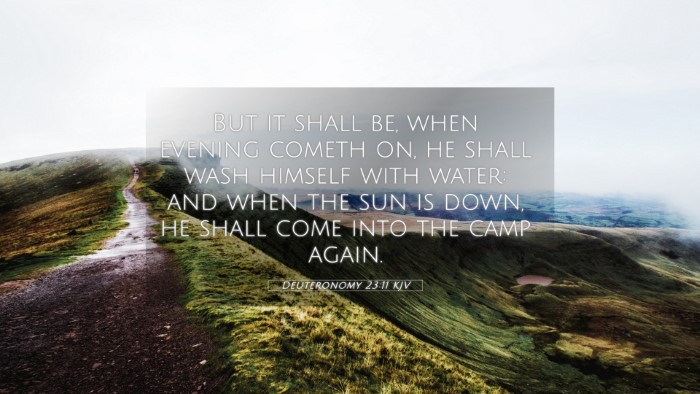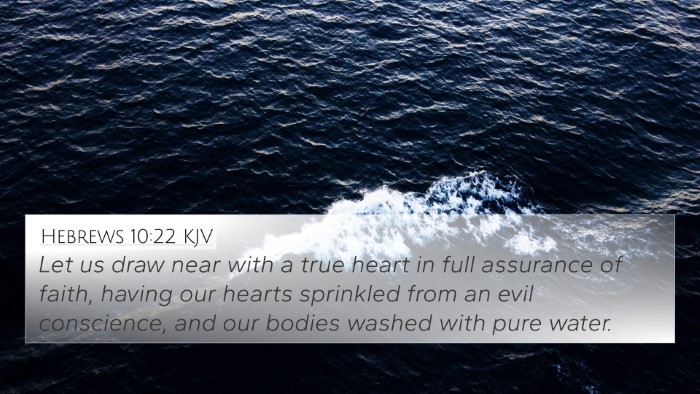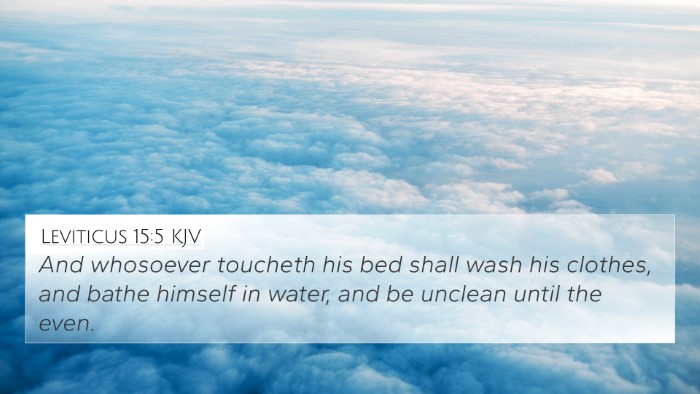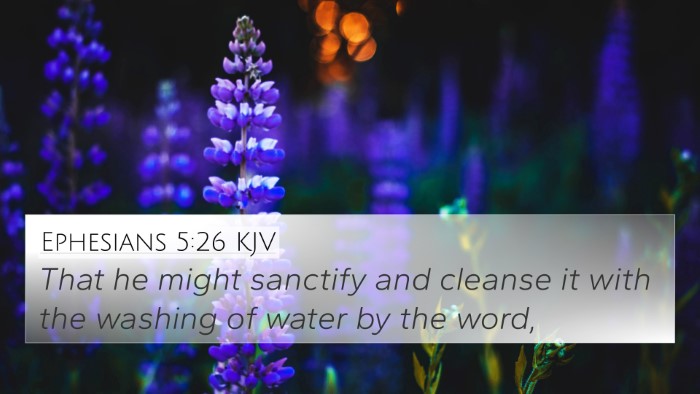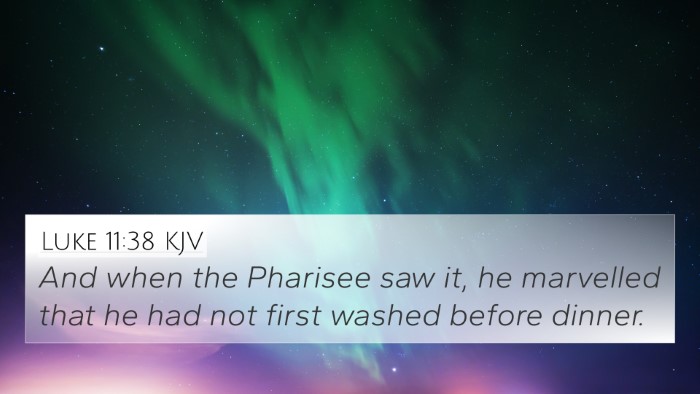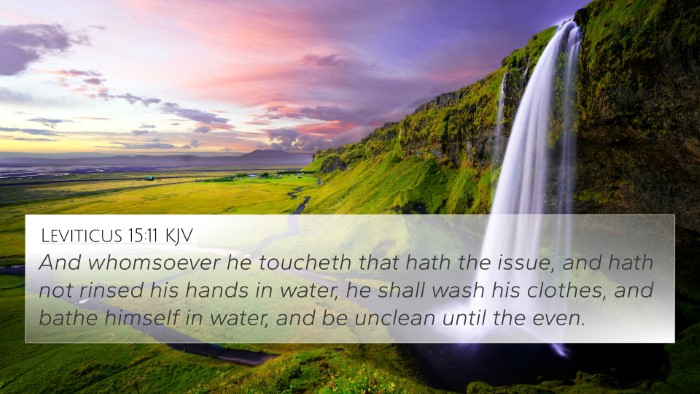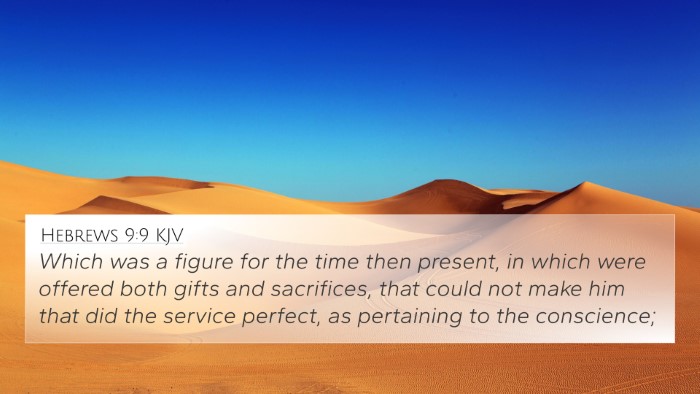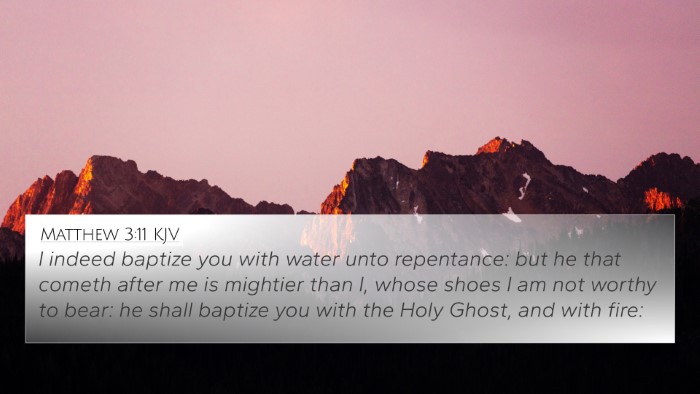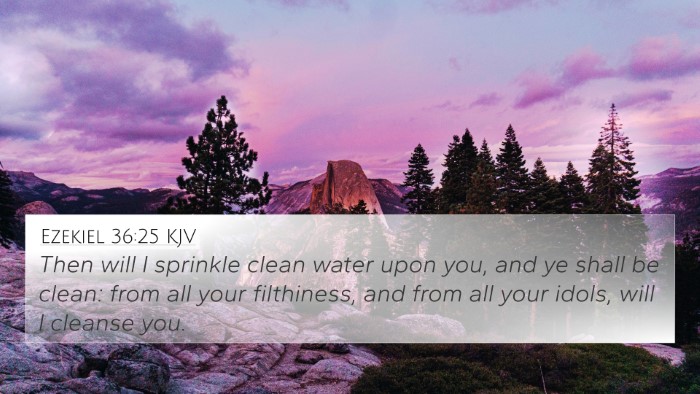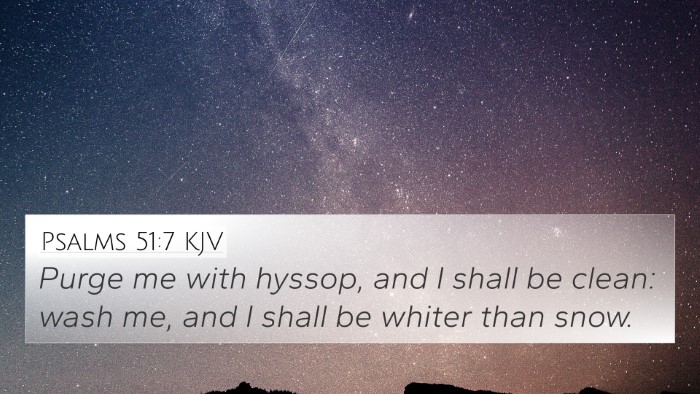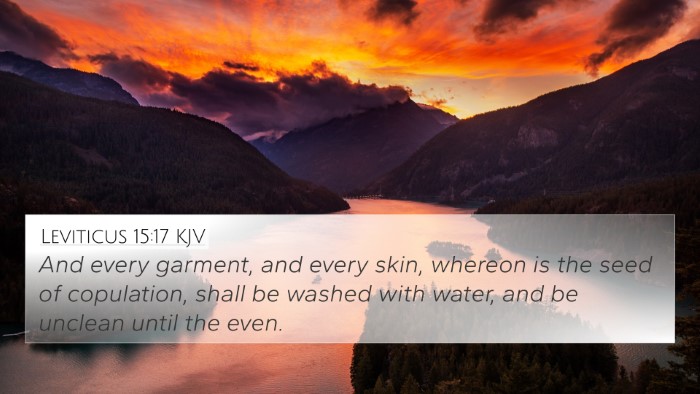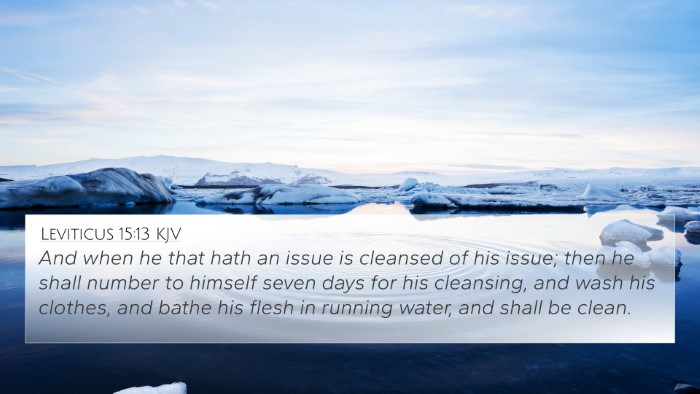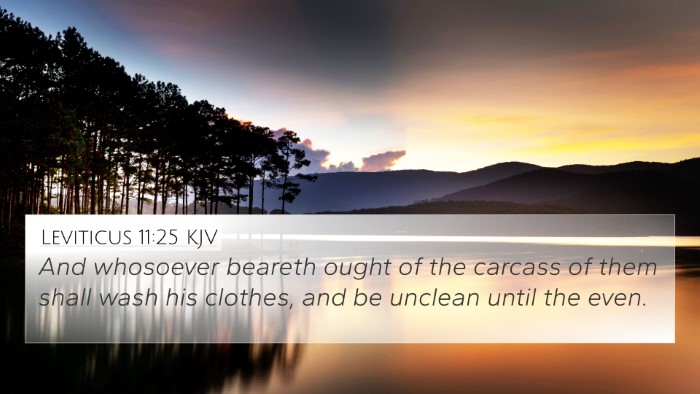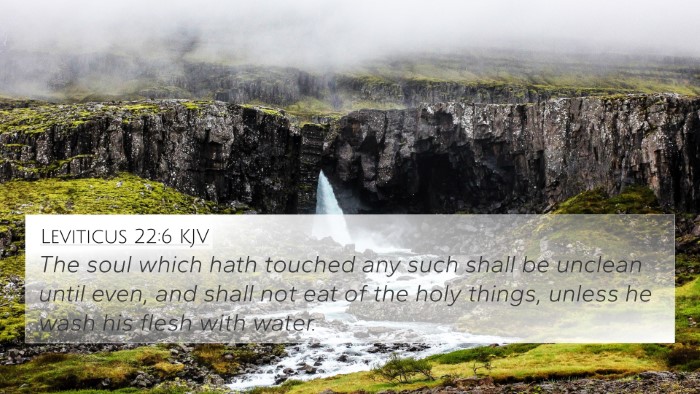Understanding Deuteronomy 23:11
Verse Reference: Deuteronomy 23:11 - "But it shall be, when evening cometh on, he shall wash himself with water: and when the sun is down, he shall come into the camp again."
Summary of Meaning
This verse addresses the purification rituals required of individuals who have come into contact with bodily fluids, particularly in the context of military camps. It emphasizes the importance of cleanliness and spiritual readiness before re-entering the community.
Insights from Public Domain Commentaries
Matthew Henry's Commentary
Matthew Henry highlights the significance of this law in fostering a sense of purity and discipline among the Israelites. He notes that the act of washing symbolizes the need for internal as well as external cleanliness when approaching God's presence. Henry emphasizes that these rituals also foster an understanding of holiness among the people.
Albert Barnes' Notes
Albert Barnes focuses on the ceremonial aspects of washing, characterizing it as a symbolic act denoting the removal of impurities and the restoration of a state suitable for worship. He points out that these guidelines were not just for physical cleanliness but served to instill a deeper reverence for God’s holiness, encouraging individuals to be mindful of their conduct in both sacred and secular settings.
Adam Clarke's Commentary
Adam Clarke contributes by providing historical context, emphasizing the practical aspects of these instructions in maintaining order and health within the community. He explains that the command reflects an understanding of hygiene that was necessary for the camp's survival and function. Clarke also discusses the spiritual symbolism of washing, reinforcing the importance of being cleansed to participate fully in the community.
Thematic Connections
This verse connects with several key themes in Scripture, including:
- Ritual Purity: Explored in Leviticus 11 and Numbers 19, where guidelines for cleanliness are expanded.
- Preparation for Worship: In Exodus 30:19-21, the priests are instructed to wash before approaching the altar.
- Spiritual Readiness: This is echoed in James 4:8, where believers are called to cleanse their hands and purify their hearts.
- Symbols of Cleansing: 1 John 1:9 discusses the spiritual cleansing from sin, paralleling the physical washing outlined in Deuteronomy.
- Community Discipline: Hebrews 12:14 calls for holiness; these laws set the tone for communal living among God’s people.
- Health and Hygiene: The connection between physical and spiritual health is further emphasized in 1 Corinthians 6:19-20, reflecting the body as a temple.
- Holiness Unto the Lord: This theme is elucidated throughout the Book of Leviticus, which encourages a lifestyle of holiness and separation from sin.
- Restoration After Contact with Sin: Acts 15:20 speaks to the need to turn from practices deemed unclean, reflecting a continual call to purity.
- Redemption through Christ: Reflecting on how Christ fulfills the purity requirements in Hebrews 10:22, instructing believers to draw near with hearts sprinkled clean.
- The Worthiness of Approach: Rev. 21:27 speaks of nothing unclean entering heaven, connecting the need for purity to eternal matters.
Cross-References for Deuteronomy 23:11
- Exodus 30:19-21 - Instructions for the priests' washing.
- Leviticus 11 - Laws of clean and unclean animals.
- Numbers 19 - The water of purification.
- 1 John 1:9 - Cleansing from sin through confession.
- James 4:8 - Call for personal purification.
- 1 Corinthians 6:19-20 - The body as a temple of the Holy Spirit.
- Hebrews 12:14 - Pursuing holiness.
- Acts 15:20 - Turning from unclean practices.
- Hebrews 10:22 - Drawing near with a true heart in full assurance.
- Revelation 21:27 - No unclean thing entering the New Jerusalem.
Conclusion
Deuteronomy 23:11 serves as an important reminder of the necessity of both physical and spiritual cleanliness in the life of the believer. By understanding the significance of this verse and its interconnectedness with other Scriptures, one can appreciate the profound themes of holiness, community, and readiness to approach God.
Tools for Bible Cross-Referencing
For further study on the connections between Bible verses, consider utilizing resources such as:
- Bible concordance for finding keywords.
- Cross-reference Bible study guides for thematic exploration.
- Comprehensive Bible cross-reference materials for in-depth research.
- Online tools for Bible cross-referencing to identify links across passages.
- Study Bibles that provide chain references throughout texts.
FAQs on Cross-Referencing Bible Verses
- How to find cross-references in the Bible? Utilize a Bible concordance or an online reference tool to identify related passages.
- Identifying connections between Old and New Testament: Study typology and references made by New Testament writers to the Old Testament.
- Cross-referenced themes in the Bible: Explore common words or subjects discussed in multiple passages to reveal interconnections.
- How do two specific Bible verses connect? Analyze context, themes, and keywords to draw parallels and relationships between verses.
- What verses are related to a specific Bible verse? Use thematic study methods or tools to explore cross-references and related scriptures.

